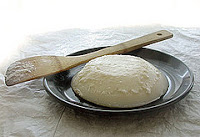Gaye Levy
Old habits die slowly. For years we have been told that animal fat is bad and to be honest, I personally subscribe to a diet plan that is primarily plant based. That said, there is a place in my diet and my kitchen for organic meat and meat products, including the fat that is typically discarded after the fact.
For the longest time, something I absolutely tossed out was cooking grease. Healthcare experts, government and public health agencies and even the editors of popular cooking magazines all jumped on the fat is bad bandwagon. Low fat was good, no fat was better and animal fat? Forget it.
The result of all this blather was an epidemic of obesity and heart disease as well as a bunch of inexplicable diseases. Now understand this: I am not a medical professional and by no means am I suggesting a diet heavy on animal fat. But, as with everything else in life, a bit of fat used in moderation may not be so bad and most certainly can add a dimension of flavor and satiety to your food.
If indeed we were in a SHTF situation, every possible scrap from the kitchen should be used for some useful purpose. This is what families did during the Great Depression – they used what they had and every bit of it. So with that in mind, today I share an article from my friend ‘Above Average Joe’ as he describes how to render animal fat into tallow.
And by the way, beef fat is called tallow and pig fat is called lard.
Chewing The Fat
Any time that you are cooking meat, odds are you’re going to have a little extra fat left on your plate but before you scrape it into the trash or give it to your dog you might want to think about how you can turn this trash into a treasure.
I know you’re not going to eat ALL of it. We are all too health conscious to do that. But fat is not good for the plumbing either and if you toss out, you attract bugs and other critters that may decide your home is now theirs.
So what do you do with it?
The best possible thing you can do is to reuse it! Our grandparents and great grandparents were masters at making the most of everything they had and leftover fat was no exception.
It’s time we get back to our roots, stop wasting that leftover fat and put it to good use!
There are two basic methods to rendering fat:
The Wet Rendering Method
Fat that has already been cooked has bits of meat and other solids in it. It has water with it when you drain it from hamburger. When you put your meat in the fridge, it’s the white substance that comes to the top. Scrape this off your stew or meat, and put your fat into a pan with some water and bring it to a slow boil.
You can do this with chunks of other fats as well. You boil your chunks of uncooked fat in water until you get a nice layer of oil on top. This is your tallow.
 Now, put your pan in the fridge overnight. In the morning separate the chunks of white tallow from the broth and water below, and you have fresh tallow for cooking, making soap, or candles.
Now, put your pan in the fridge overnight. In the morning separate the chunks of white tallow from the broth and water below, and you have fresh tallow for cooking, making soap, or candles.
The broth and water, of course, can be used for soup stock, if you want.
The Dry Rendering Method
Depending on where you get it, please wash it first. You don’t want bits of waste, dirt, hair or other impurities in your end product.
Dry rendering really isn’t dry. Nothing about rendering fat is dry, but it doesn’t use water, which is why it’s called the dry rendering method.
There are two ways to render fat using this method. The first is the crock pot method. You can also use a large soup pot on top of the stove. The idea is to cook everything very slowly.
Start with trimmed fat, kept in the fridge overnight. Cold fat is MUCH easier to work with. By trimmed fat, I mean you trim off bits of bone, meat and gristle and use the rest. If the trimmed bits are clean, they can be used in a wet rendering method, if you want.
Run the chunks of fat through a food processor so that it’s all ground up before you begin. Then set your crock-pot to the low setting, or your stock pot onto the lowest setting on your range, and let it cook. The fat will melt, and the top will be filled with impurities. When the top layer is filled with crispy bits, then your fat will be rendered.
Scrape off the top layer of cracklings, and then run the remainder through cheesecloth to further remove the impurities. You can place your cheesecloth directly over clean, wide-mouth canning jars and slowly pour the fat through the cheesecloth into the jars. When you seal the jars, just as if you were canning vegetables, the tallow will keep for years.
Remember, the more air that gets to the tallow, the less time it will have to keep from turning rancid.
The second dry rendering method is to fry it, much like you would fry bacon. If you cut your fat into one-inch pieces or strips, all relatively in uniform size, you will have some nice cracklins for snacking on or adding to other food. The problem with this method is that you need to watch closely so that you do not burn them. That will add an unsavory flavor to your tallow.
Storing Tallow
 The problem with tallow is that it must either be used, sealed or frozen otherwise it will turn rancid rather quickly. Canned tallow can keep for years. It will keep in the fridge for months.
The problem with tallow is that it must either be used, sealed or frozen otherwise it will turn rancid rather quickly. Canned tallow can keep for years. It will keep in the fridge for months.
Definitions
Tallow is beef fat. Lard is pork fat. Rendered chicken fat is schmaltz. All can be used in the place of shortening or oil for cooking, and all can be used to make candles, or soap.
About ‘Above Average’ Joe: I am just an average guy with a passion for learning. I am excited to share the things I learn with you but I am most interested in learning from you. Survival Life is more than just one man. It is a growing and living community of individuals; all with the desire to be prepared to survive and thrive no matter what this world throws at us. I want to welcome you to the Survival Life community and look forward to growing with you! Thank you, Gaye, for inviting me to share the Survival Life with your readers!
THE FINAL WORD
Three years ago if you mentioned saving and actually using bacon grease for anything other than a smelly trip to the garbage bin I would have cringed. These days, every bit of fat is carefully rendered and stored either in the refrigerator or freezer. I use a smallish spoonful to add flavor to fried foods (along with a my new cooking fav, uber healthy coconut oil).
Perhaps it is all a delusion and what I am doing is not such a good thing. Still, if hard times come, I know that having some fat in my diet – even animal fat – will be better than none at all. In addition, the tallow will make a dandy oil candle or, when used with a bit of cotton, an effective fire starter.
Read other articles by Gaye Levy here.
Enjoy your next adventure through common sense and thoughtful preparation!
If you would like to read more from Gaye Levy, check out her blog at http://www.backdoorsurvival.com/. You can also visit her Facebook page or sign up for updates by email by clicking on Backdoor Survival Updates.
linkwithin_text=’Related Articles:’



Be the first to comment on "Learning to Render Fat"